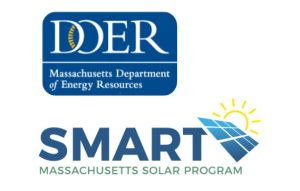Solar News & Information
How does the Massachusetts SMART Program Compare
December 6, 2021
Massachusetts leads 48 other states in adopting solar power thanks to creative incentives and strong financial returns. Homeowners in a way become power producers, paid for the energy output of their solar panels, making a solar investment in the Bay State one of the easiest and financially sound investments in the U.S.
Read on to see how it happened.
Starting with Renewable Energy Standards
Nearly forty U.S. States have created their own individual Renewable Portfolio Standards (RPS), the building block for transitioning each state into the clean energy future. The RPS is a regulation that sets targets and goals for the production of electricity, generally from solar energy and wind energy resources.
Further regulations and incentives follow the RPS to assist in making it feasible and most importantly to create an economical path for energy providers to reach the goals.
For almost two decades, Massachusetts has been improving on the original RPS and the state’s evolution to the Alternative Energy Standard and now the current Clean Energy Peak Standard.
Creating Solar Energy Credits
Each state’s RPS sets the framework for further regulations and incentives. Commonly states create a Renewable Energy Certificate or Credit system (REC) which defines tradable, non-tangible energy commodities that represent proof that 1 megawatt-hour (MWh) of electricity was generated from an eligible renewable energy resource. Like Massachusetts, many states also have created SRECs, which are solar specific carve outs for Renewable Energy Certificate issuance.
RECs and SRECs are economical options for utilities and third party power producers to meet their RPS regulated targets. Rather than invest exclusively in solar energy and wind and other renewable energy sources, they have the option to “buy” some capacity that these certificates represent.
All RECs and SRECs are sold in an open market to the highest bidders. Prices therefore fluctuate. Each year credits can be sold or kept, depending on the seller’s choice.
Beginning 2010 in the Bay State, there have been two successful SREC programs – SREC I and SREC II. As intended, these produced additional value to the solar energy system owner which significantly offset the cost of going solar.
Seem complicated? There’s good news!
Solar Massachusetts Renewable Technology

The good news for Massachusetts homeowners, all of this has been simplified! The Solar Massachusetts Renewable Target (SMART) program has replaced both the SREC I and SREC II. No longer do homeowners receive and then sell the energy credits based on their solar energy production. Homeowners are paid for production.
Repeating – the SMART program was designed to give the solar energy system owner predictable payments based exclusively on production, thereby eliminating market fluctuations. The level of payments is locked in at the time of the installation. These payments, sometimes referred as tariffs, essentially PAY you to produce solar power at a contracted and predictable amount.
SREC volatile pricing made it difficult for homeowners to determine how much savings they would really get from their system. It is now possible to create an accurate estimate of current and future savings using SMART calculations.
The SMART program is limited in its scope, and those who sign up in 2022 will see a better payment rate.
To learn more about SMART and all solar energy incentives, visit our Residential Incentives page.
Contact Us with questions or to see exactly how solar power will work for YOUR home, saving you thousands. It’s a free evaluation with absolutely no obligation.

